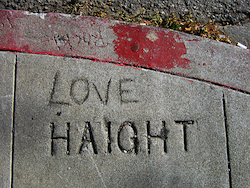I – IV – V Chord Progression – Basic Music Theory
February 2, 2011 Leave a comment
I – IV – V Chord Progression – Basic Music Theory
 Have you ever noticed that a lot of songs from a wide range of genres (pop, country, blues…) a lot of the time sound “the same”. Or at least have the same “feel” to the progression of the notes/chords that make up the song.
Have you ever noticed that a lot of songs from a wide range of genres (pop, country, blues…) a lot of the time sound “the same”. Or at least have the same “feel” to the progression of the notes/chords that make up the song.
The reason for this “similar progression” is that all of these genres usually use the same progression – the I – IV – V (or the 1 – 4 – 5) progression. Really when you start diggin deep the realization comes that many songs are truly written the same musically with just different lyrics. That doesn’t mean people are ripping off other artists music – it just means there is a limited number of combinations in which you can craft the structure of a song. From there an artist can add variations (like turning a V into V7) and using different instruments, effects, and tempos all together create the originality of a song that could be using the same pattern as thousands of other songs.
To explain this lets start with a scale – here is the C major scale:
C – D – E – F – G – A – B
Now the notes that are bold make up the I – IV – V —-> C – F – G
The idea is that you can pick any root scale (our example used C major) and just play around with those three chords/notes that make up the I-IV-V to write a song. And by using different combinations of those three chords you can create any number of songs in different keys (key is the first note or the “root” of a scale).
A great example is Tom Petty. Almost every Tom Petty song only has three chords – the first, fourth, and fifth of whatever key the song is in (so an example would be the song is in the key of G major – so the three chords played in the song would just be combinations of G – C – D).
Common Variations of the I – IV – V Progressions are:
I – IV – I – V
I – IV – V – I
I – V – IV – I
I – V – I – IV
If we replace those Roman Numerals with actual notes – again we’ll use C Major, here is how it looks:
C – F – C – G
C – F – G – C
C – G – F – C
C – G – C – F
Now there are many variations to this. The easiest is throwing in the VII (or 7th) to replace the V (or 5th). The seventh note in a scale “feels” or “sounds” like it wants to go back to the first (I) or fifth (V) in the scale. Here is an example in C Major:
I – IV – I – VII – I
C – F – C – B – C
another:
I – IV – V – VII – I
C – F – G – B – C
Or having the seventh go back to the fifth:
I – IV – I – IV – V – VII – V
C – F – C -F – G – B – G
Full List of the I – IV – V Progressions by Keys (works for Major or minor):
C – D – E – F – G – A – B
D – E – F – G – A – B – C
E – F – G – A – B – C – D
F – G – A – B – C – D – E
G – A – B – C – D – E – F
A – B – C – D – E – F – G
B – C – D – E – F – G – A
———————————————————--------------------------- This is a basic Tutorial on I-IV-V progression If you would like further information: Email music@lovehaightrecords.com ———————————————————---------------------------
Keep a look out for more Tutorials expanding upon the I-IV-V progression including; Blues and Jazz variations, and linking the parallel minor to the Major 6th.
_________________________________________________________________________
More on Love Haight Records can be found at LoveHaightRecords.com
and on Facebook.com as well as this old MySpace.com thing. The tutorial,
which you are reading, can be found at this cool site WordPress.com.
The label features Tutorials from time to time… to get on the Love Haight
Records newsletter list click here and take off your pants.
LoveHaightTutorial 02


